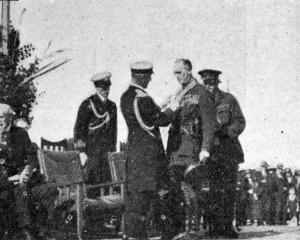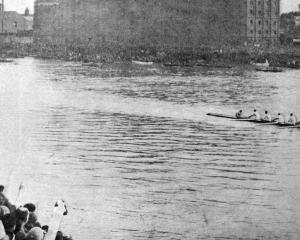
In Honolulu, he said, there were 60,000 Japanese, and not all the power of America could get them out. They could practically run the Hawaiian group. ‘‘I am perfectly aware that the Japanese are good friends of ours. During the war they played the game, but it may be that friends of today will become enemies of tomorrow. Now is our opportunity, and we must take advantage of the position fairly and honourably. We must take care that in future we do not suffer from the disadvantages we had to face at the outbreak of the war, with enemies at our doors. We must take care not to allow aliens to be established in islands under our control.’’
Speaking of the New Hebrides, Mr Massey said that something should be done and done urgently. One never heard of exports or imports from the New Hebrides, and the condition of the natives was appalling. Joint system of control by Great Britain and France worked badly, and it was the business of Australia and New Zealand to see that something better was done.
He had done his best to arrange matters at Home, but Peace Conference could not take cognisance of the New Hebrides, as they were not enemy possessions. For the sake of the natives we should do our level best to put things there on a proper footing.
Shipping constrains immigration
Referring to the Government’s immigration policy to-day, the Prime Minister said it was only in its initial stage, and the lack of shipping was holding up the stream of immigration bound for this country.
On three ships due out here shortly there were immigrants as well as soldiers. The system of nominated immigrants was calculated to bring the very best class of settler, and thousands of people were waiting.
On the Athenic, Tainui, and Corinthic would come the rest of our troops, munition, and other war workers who had gone from New Zealand during the war. As to domestics, about 200 were on their way out at a cost of about £40 each for their passage. The Government had arranged for the conversion of cargo steamers for the carrying of emigrants on the voyage out, and the steamer Mahana would bring about 1100, arriving here in April.
Runanga hit by influenza
Greymouth: It is now estimated that there are 200 cases of influenza in Runanga. It is suspected that the pneumonic type prevalent at the last epidemic is again developing.
Approximately during the week-end one case occurred every three hours. There are now four cases in the Grey River Hospital of bronchial pneumonic types. The State mines have been closed, and Runanga is completely isolated, road patrols preventing all persons leaving or entering.
Teacher admonished
At Friday's meeting of the Southland Education Board, a teacher wrote from Dunedin requesting leave of absence owing to influenza.
This was granted without pay, the board being of the opinion that the teacher had no right to visit an infected area when schools were closed as a precautionary measure.
— ODT, 4.3.1920.
COPIES OF PICTURE AVAILABLE FROM ODT FRONT OFFICE, LOWER STUART ST, OR WWW.OTAGOIMAGES.CO.NZ












